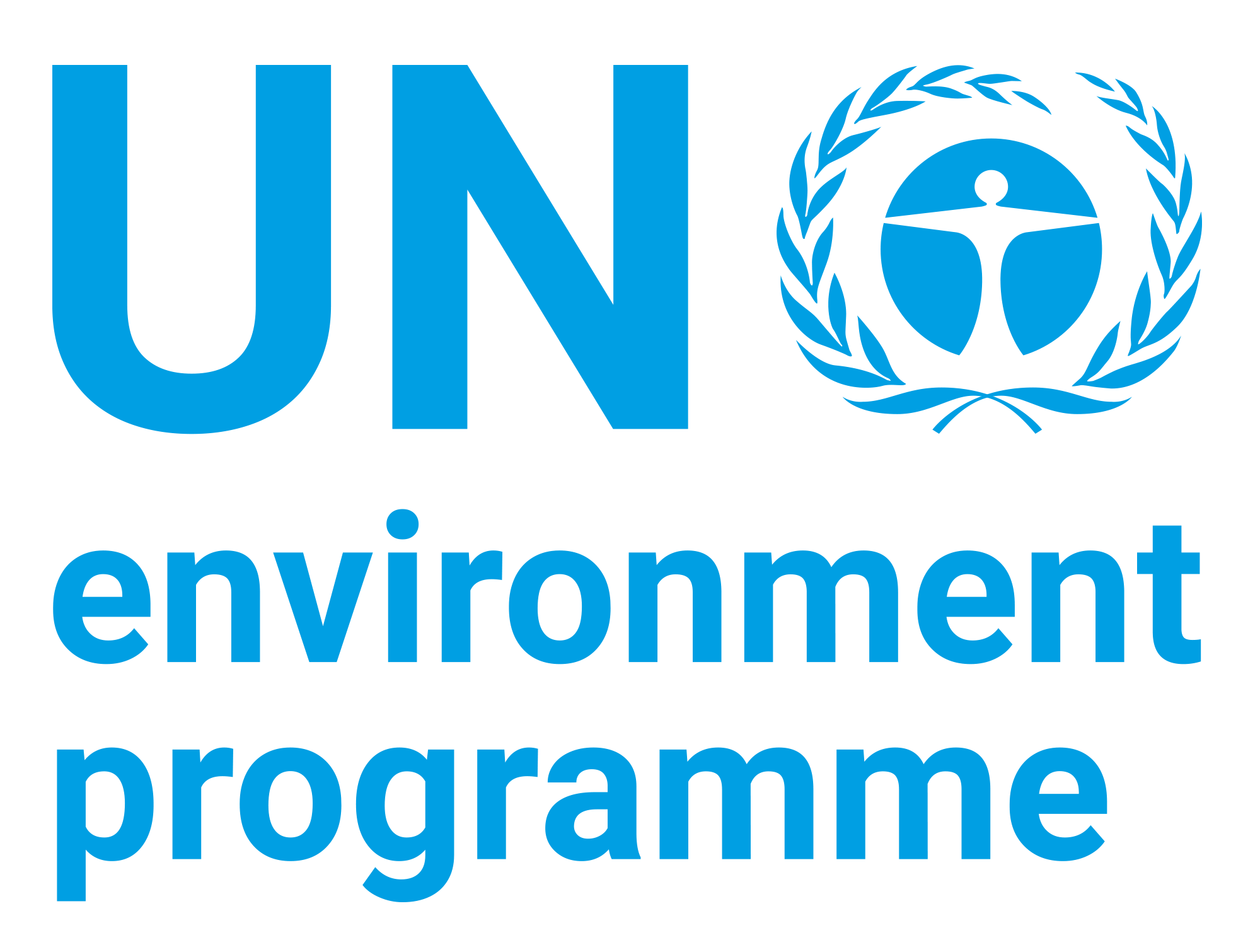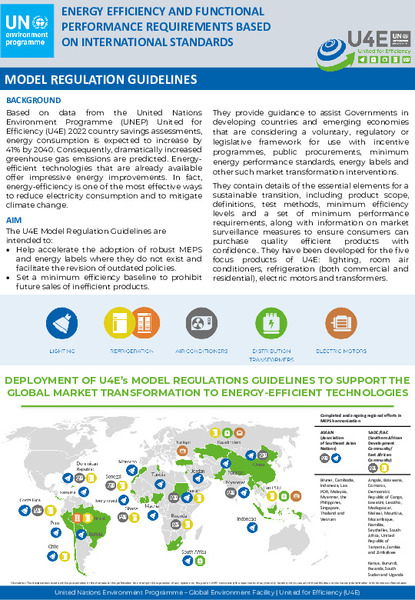| dc.contributor | Industry and Economy Division | en_US |
| dc.contributor.author | United Nations Environment Programme | en_US |
| dc.coverage.spatial | Global | en_US |
| dc.date.accessioned | 2023-07-27T14:12:27Z | |
| dc.date.available | 2023-07-27T14:12:27Z | |
| dc.date.issued | 2022 | |
| dc.identifier.uri | https://wedocs.unep.org/20.500.11822/43076 | |
| dc.description | Based on data from the United Nations Environment Programme ( United for Efficiency (U 4 E) 2022 country savings assessments, energy consumption is expected to increase by 41 by 2040 Consequently, dramatically increased greenhouse gas emissions are predicted Energy efficient technologies that are already available offer impressive energy improvements In fact, energy efficiency is one of the most effective ways to reduce electricity consumption and to mitigate climate change. | en_US |
| dc.format | pdf | en_US |
| dc.language | English | en_US |
| dc.rights | Public | en_US |
| dc.subject | energy efficiency | en_US |
| dc.title | Energy Efficiency and Functional Performance Requirements Based on International Standards - Model Regulation Guidelines | en_US |
| dc.type | Manuals, Guides and Toolkits | en_US |
| wd.identifier.sdg | SDG 7 - Affordable and Clean Energy | en_US |
| wd.identifier.sdg | SDG 14 - Life Below Water | en_US |


